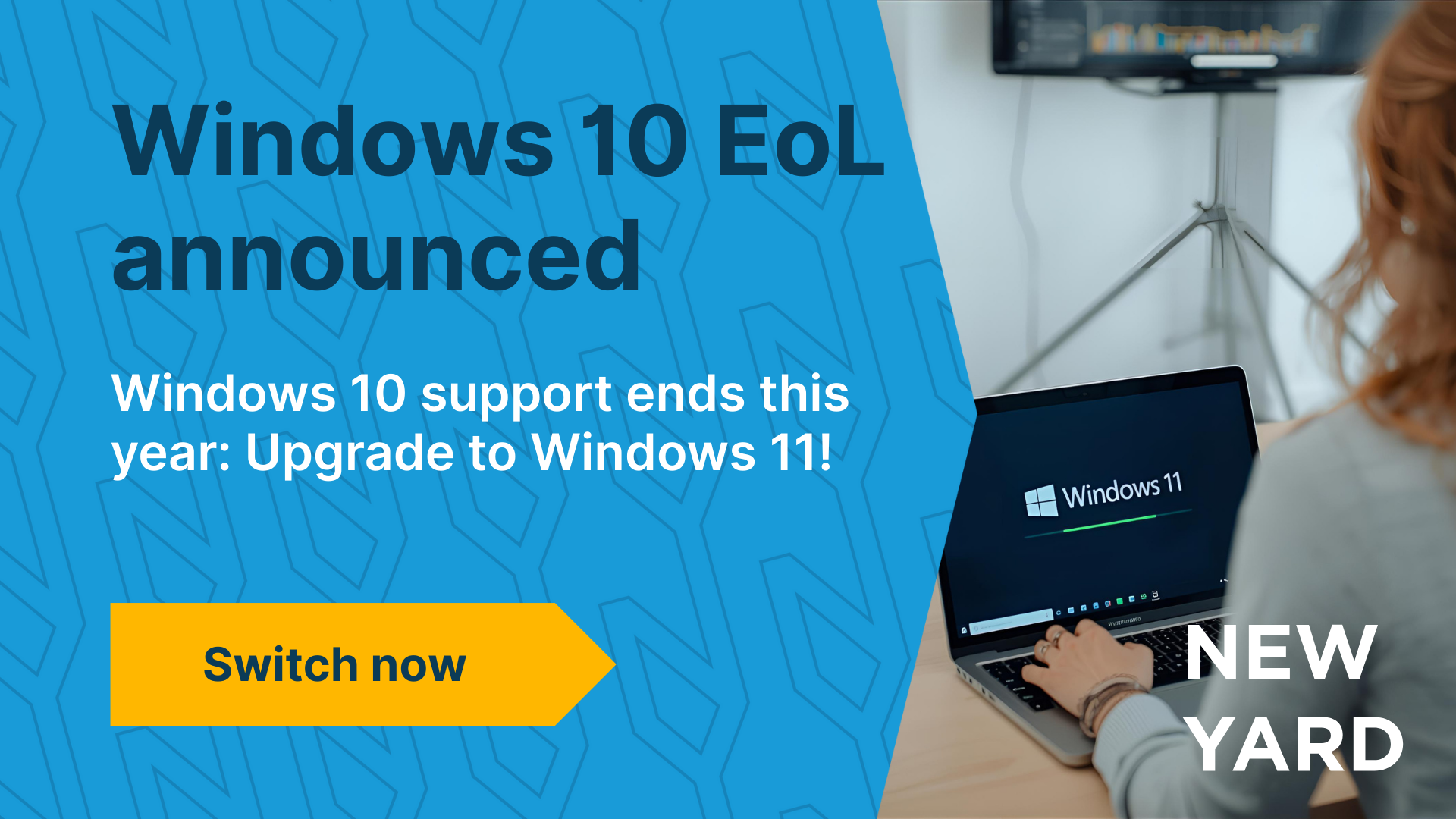On Oct. 14, 2025, Microsoft will officially stop supporting Windows 10. That means no more security updates or bug fixes will be released from that date. Your computer will still work, but you will be at great risk of cyber attacks and data breaches.
According to figures from Statcounter, nearly 47% of Windows computers in the Netherlands are still running Windows 10. So chances are that your organization also still has devices running this operating system. It is time to take action, because waiting increases the likelihood of problems.
What does end support mean to you?
When a product reaches End-of-Life (EoL), the manufacturer stops updates and security patches. For Windows 10 users, this means:
- New vulnerabilities are no longer fixed.
- Cybercriminals are given free rein to exploit security vulnerabilities.
- You are at risk of file loss, ransomware or other digital damage.
- Other systems within your network are also at risk.
For example, a new security hole in Windows 10 may provide an opening for cybercriminals to penetrate. That could lead to file loss, extortion and other damage. Also, with an operating system not secured, you may pose a risk to other systems inside or outside your organization.
How do you know if you are still using Windows 10?
Doubting whether your computer is still running Windows 10? Check it easily:
- Press Windows key + R.
- Type winver and press Enter.
- A window appears showing your Windows version.
Another route is through Start > Settings > System > Info. Here you can immediately see if you are still running on Windows 10.
What are your options?
1. Upgrade to Windows 11
If your hardware meets the system requirements, you can switch to Windows 11 for free. Through Settings > Security and update > Windows Update you can immediately see if your device is suitable.
Note that not all older devices are compatible with Windows 11. So check beforehand to make sure your hardware and software used are compatible.
2. Choose alternative measures
Can’t upgrade (yet)? Then take temporary measures to mitigate risk:
- Segment your network: separate Windows 10 systems from other critical components.
- Use antivirus software that still supports Windows 10.
- Consider Microsoft Extended Security Updates (ESU): paid updates that deliver 3 more years of security patches. Note that this is a stopgap solution, not a structural choice.
- Orient yourself to alternative operating systems, such as Linux.
Grant for SMEs: increase your cyber resilience
Not sure where to start? To help entrepreneurs take cyber measures, in cooperation with the Digital trust center, the CyberSafe Check for sole traders and SMEs has been launched. For small entrepreneurs experiencing a financial bottleneck, there is now temporarily the subsidy scheme My Cyber Resilient Business.
This does not apply to the upgrade to Windows 11, but it does apply to other measures that increase your digital security.
Why take action now?
October 2025 may sound far away, but migrations, updates and replacements take time. Moreover, there is a high risk of support and hardware shortages toward the deadline.
By starting today:
- Prevent system failures.
- Save yourself unexpected costs in the long run.
- Keep your business digitally secure and reliable.
Conclusion
The end of Windows 10 support is a serious risk for business owners. Cybercriminals are ready to attack old systems. Waiting is not an option.
Check today to see if your business still works with Windows 10 and make a plan for the switch. Invest in a secure digital work environment and protect your organization, your employees and your customers. Have questions about switching to Windows 11, cyber security or other issues related to this article?

